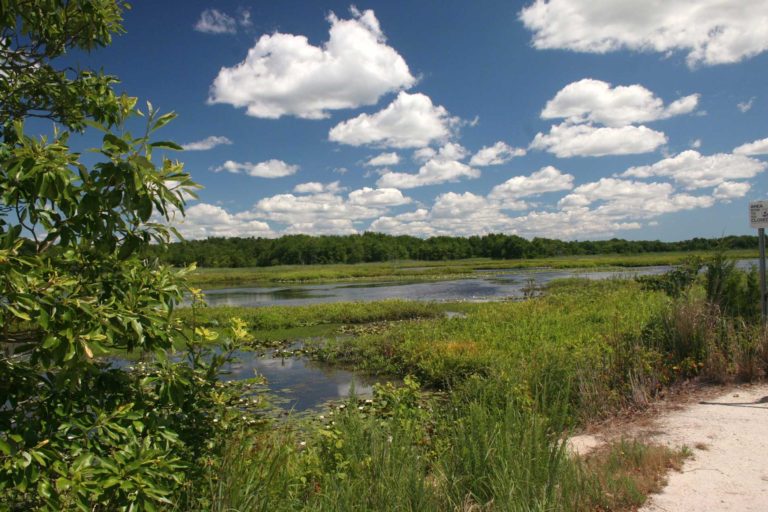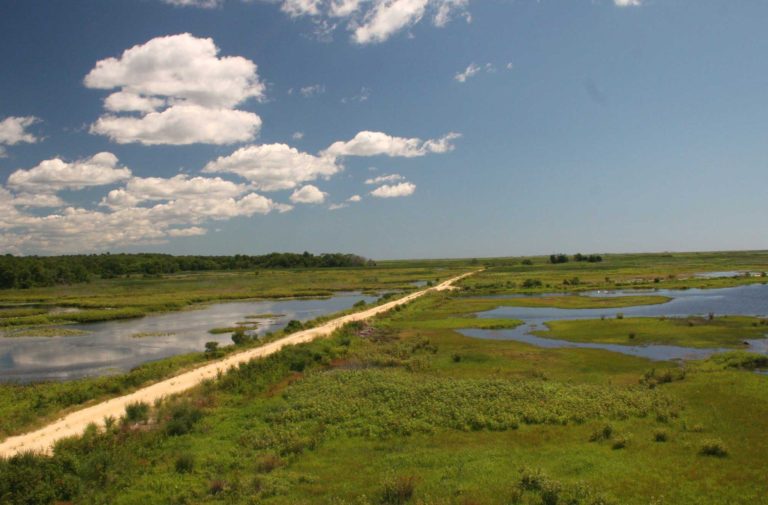The Edwin B. Forsythe National Wildlife Refuge is one of 552 national wildlife refuges administered by the United States Fish and Wildlife Service. These refuges compromise more than 150 million acres. Refuges are located in the contiguous 48 states, Alaska, Hawaii, and territories.
The Forsythe Refuge protects about 47,000 acres located mainly along the back bays of the New Jersey coast. It extends along more than 50 miles of the coast, with habitats in Atlantic, Burlington, and Ocean Counties. Forsythe consists of salt marshes, unspoiled barrier beaches, and some transition and upland areas. It is within the Atlantic Flyway, and habitats within the refuge are managed for resident wildlife and migratory birds. As a result, this area is especially important to waterfowl and water birds. Endangered species also flourish in these protected habitats.
Forsythe consists of salt marshes, unspoiled barrier beaches, and some transition and upland areas. It is within the Atlantic Flyway, and habitats within the refuge are managed for resident wildlife and migratory birds. As a result, this area is especially important to waterfowl and water birds. Endangered species also flourish in these protected habitats.
Early in the history of Forsythe there were two major management divisions, the Brigantine and Barnegat divisions. The refuge was renamed in 1984 in memory of the late conservation Congressman from New Jersey, Edwin B. Forsythe. The Brigantine and Barnegat divisions were combined and renamed through a Congressional Joint Resolution.
Congress also designated 6,600 acres of the refuge as the Brigantine Wilderness Area in 1975. The wilderness was established to preserve refuge wetlands for waterfowl, wading birds, shorebirds, beach nesting birds and other wildlife, and contains the Holgate Peninsula, Little Beach Island and the marshes west of the island, and two areas near the mouth of the Mullica River. Habitats include primarily salt marsh and barrier beach with a small area of maritime forest on Little Beach Island. Forsythe refuge is on the Ramsar List of Wetlands of International Importance and is part of the Jacques Coustea National Estuarine Research Reserve.
Congress also designated 6,600 acres of the refuge as the Brigantine Wilderness Area in 1975. The wilderness was established to preserve refuge wetlands for waterfowl, wading birds, shorebirds, beach nesting birds and other wildlife, and contains the Holgate Peninsula, Little Beach Island and the marshes west of the island, and two areas near the mouth of the Mullica River.
Habitats include primarily salt marsh and barrier beach with a small area of maritime forest on Little Beach Island. Forsythe refuge is on the Ramsar List of Wetlands of International Importance and is part of the Jacques Coustea National Estuarine Research Reserve.
The wildlife drive is open from sunrise to sunset year round. Rangers, Friends and volunteers are available to answer questions. The Visitor Information Center provides interpretive displays, an introductory video, E-bird records, and a nature store operated by the Friends of Forsythe.


